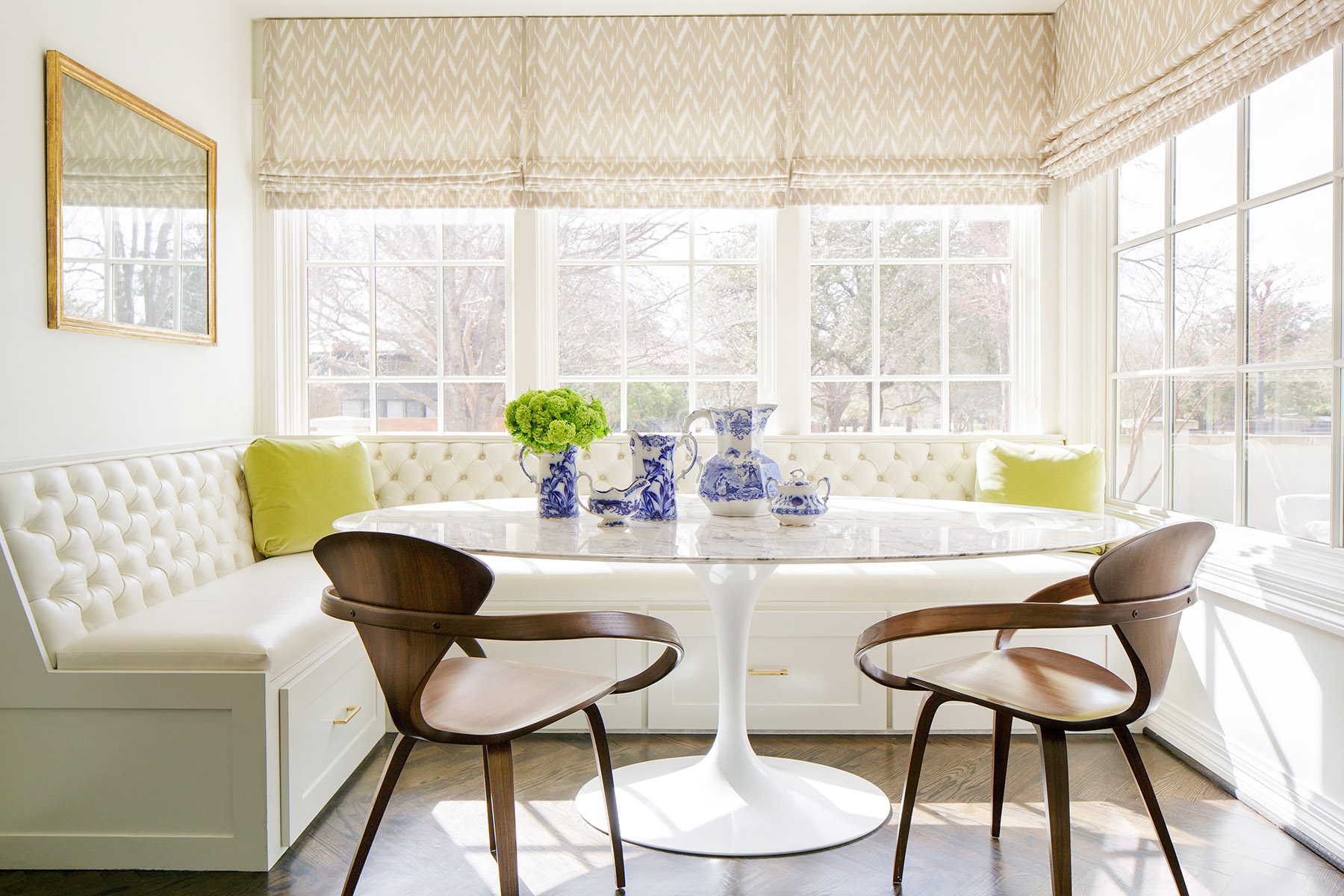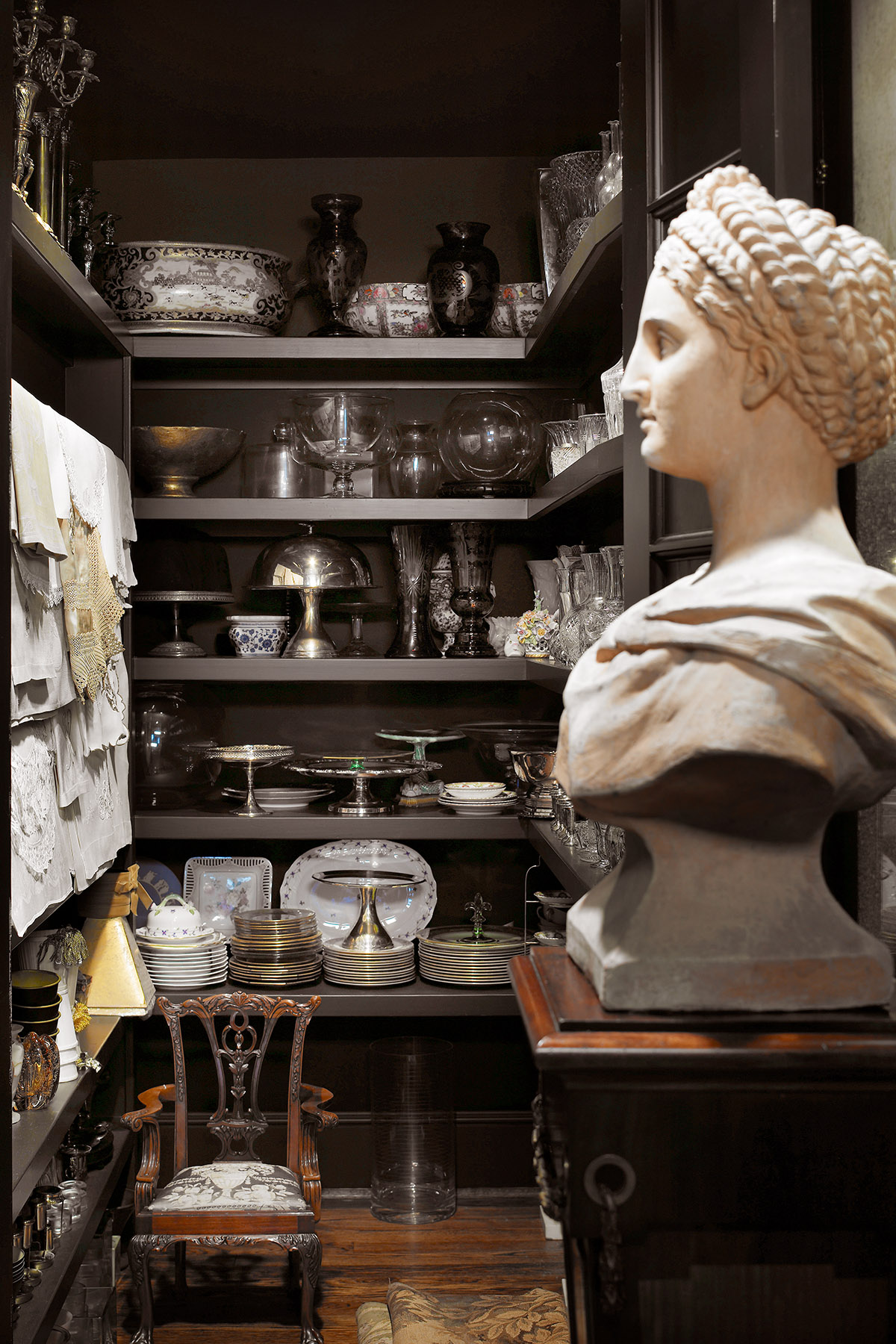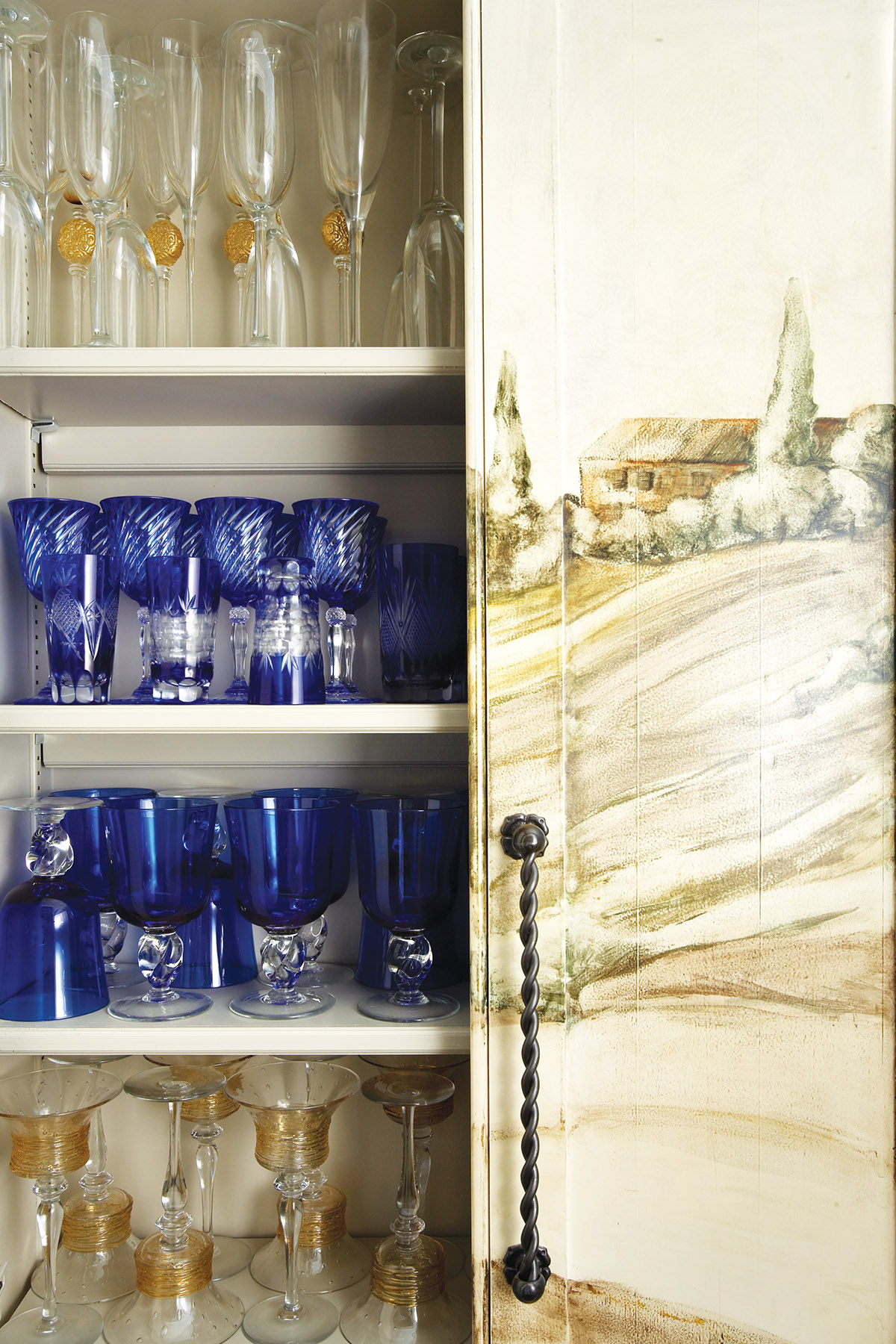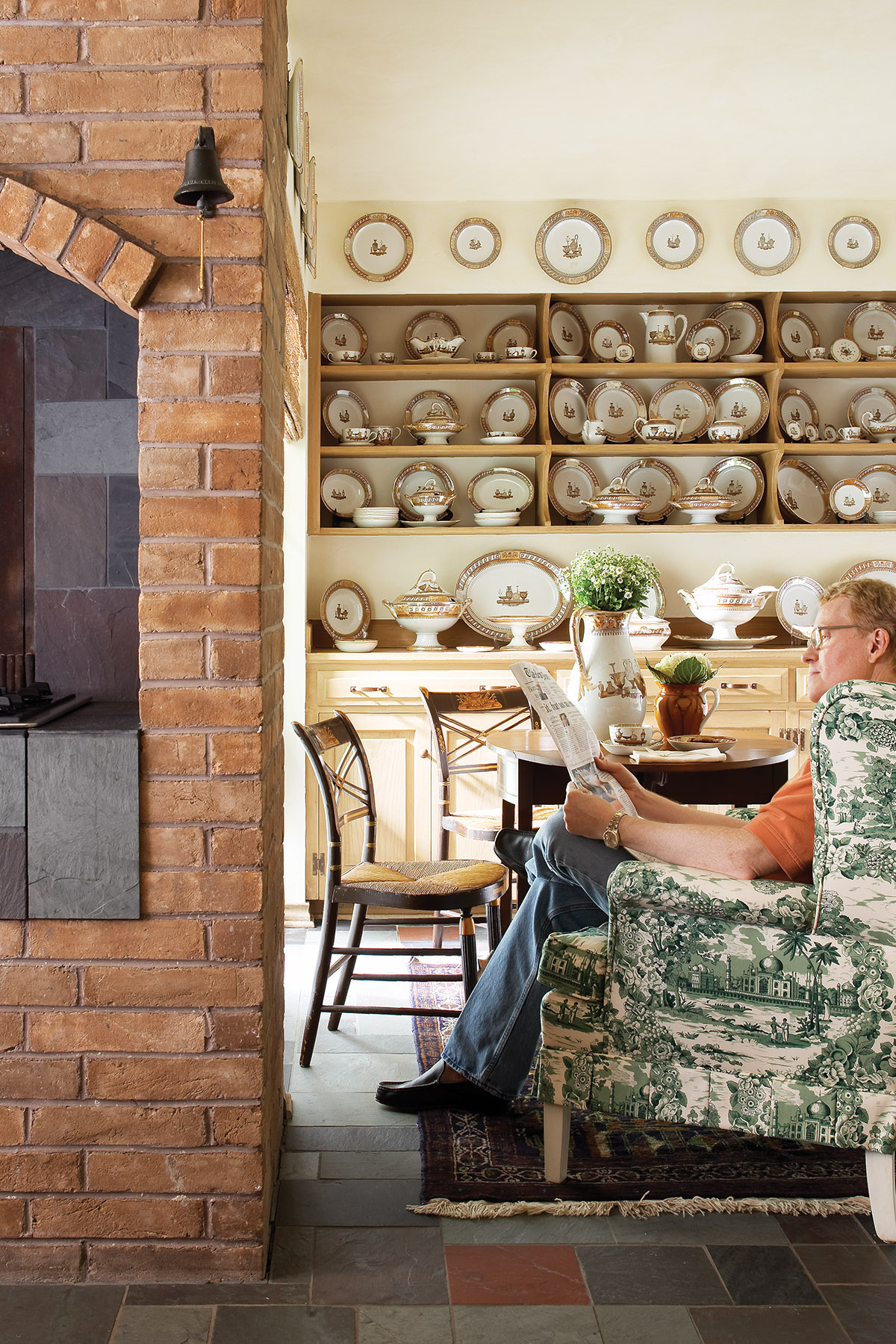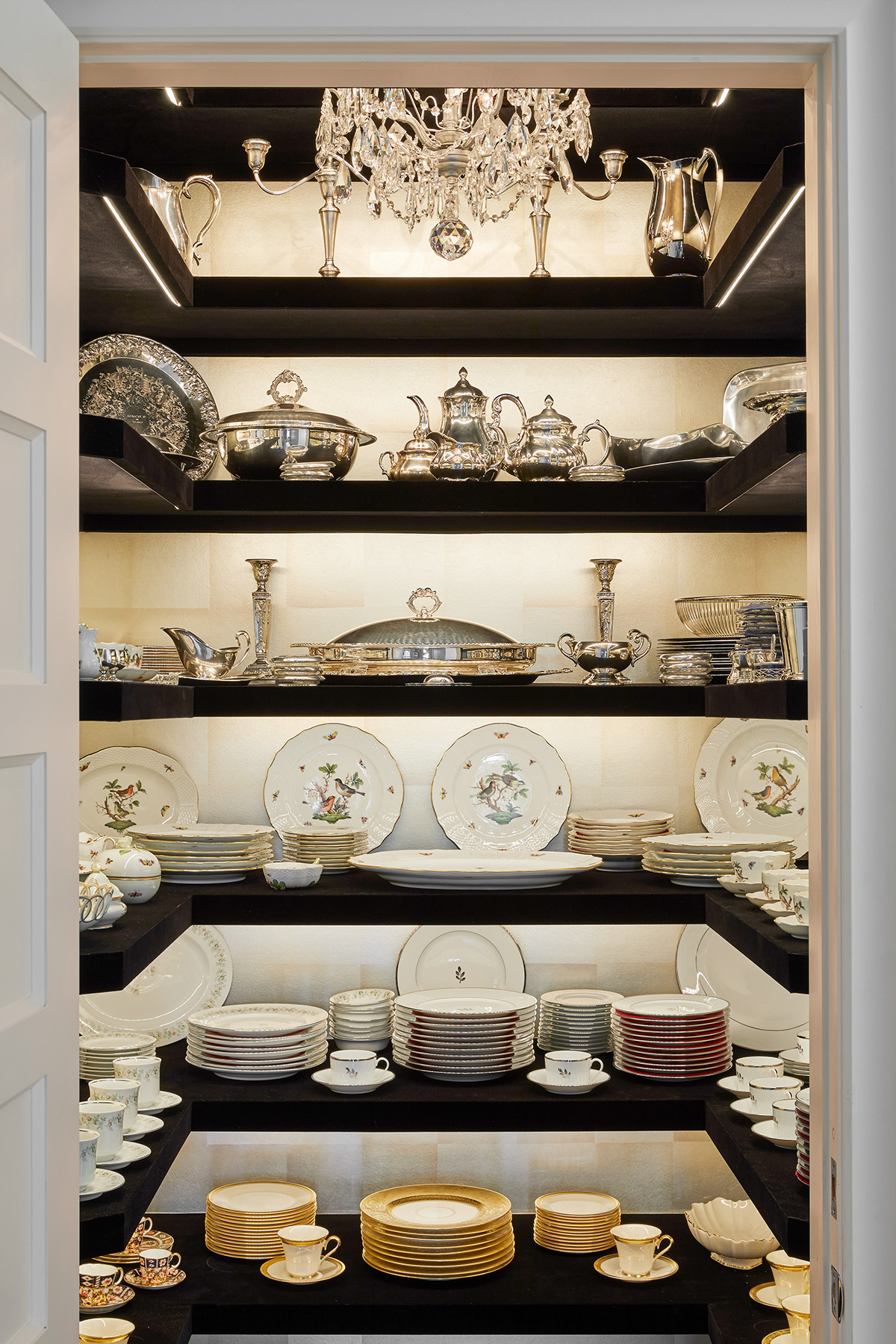In a day and age when breakfast is often a protein bar eaten on the way to work, lunch is a takeout salad served in a cardboard bowl, and dinner is a plate of leftovers in front of the television, it’s a refreshing departure from the norm when friends and family can sit down together at mealtime. That’s why dining rooms hold such a special place in our heart. Whether it’s a grand formal space dripping in drama or a casual breakfast nook with a built-in banquette, we’re fans of any space where we can gather with loved ones and enjoy a meal.
Go Ahead, Be Dramatic
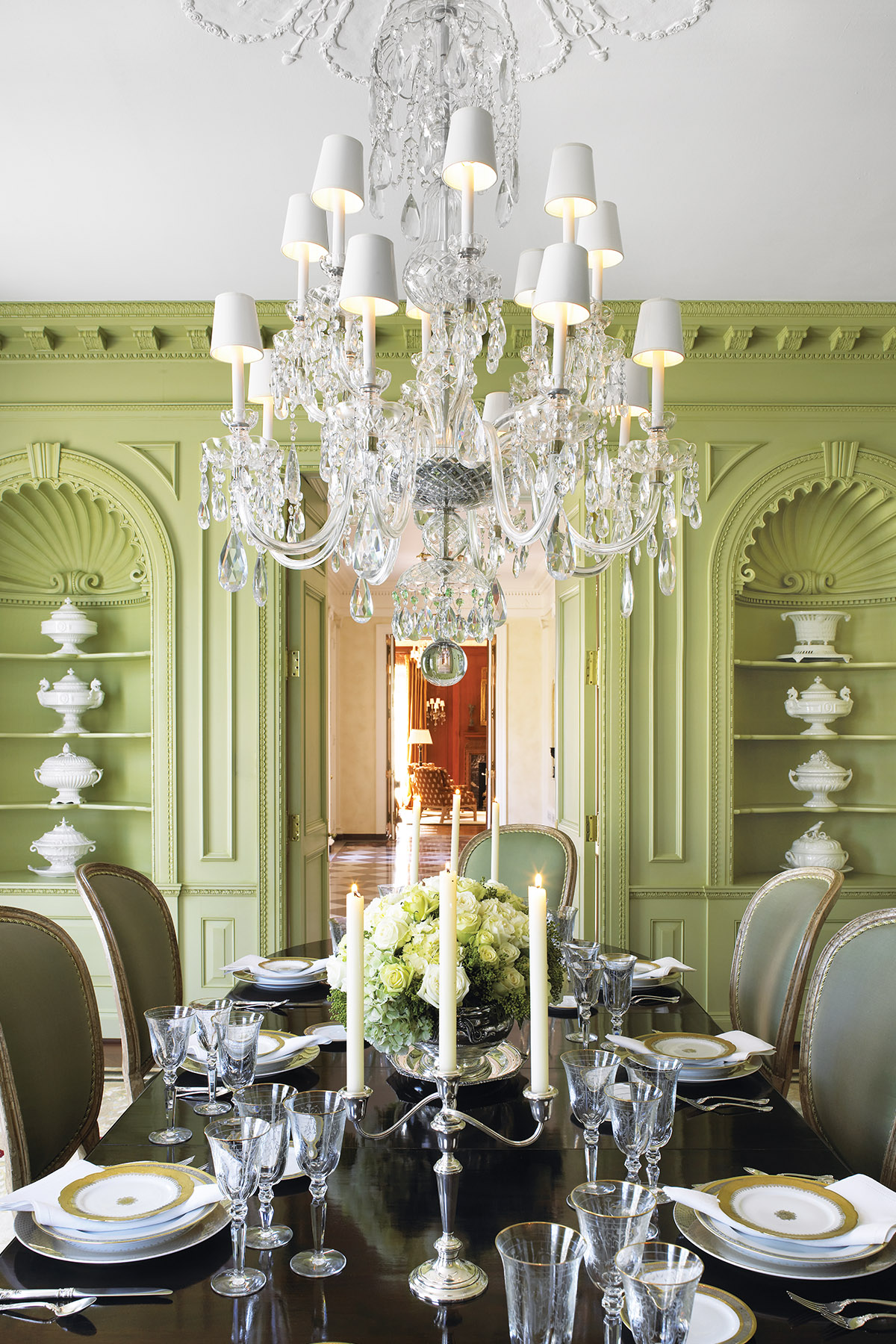
Why it works: Painting the ornate moldings and carved-shell niches the same pale green as the wall makes a striking statement. May/Jun 2006
The characteristics we like in people we happen to love in a dining room: formal, dramatic, and always ready for a party. These two dining spaces—one from a Turtle Creek penthouse designed by Loyd-Paxton and the other by designer Larry Grussendorf—both embrace over-the-top beauty with dramatic chandeliers, luxe wall treatments, and tablescapes fit for royalty.
Old World Wow
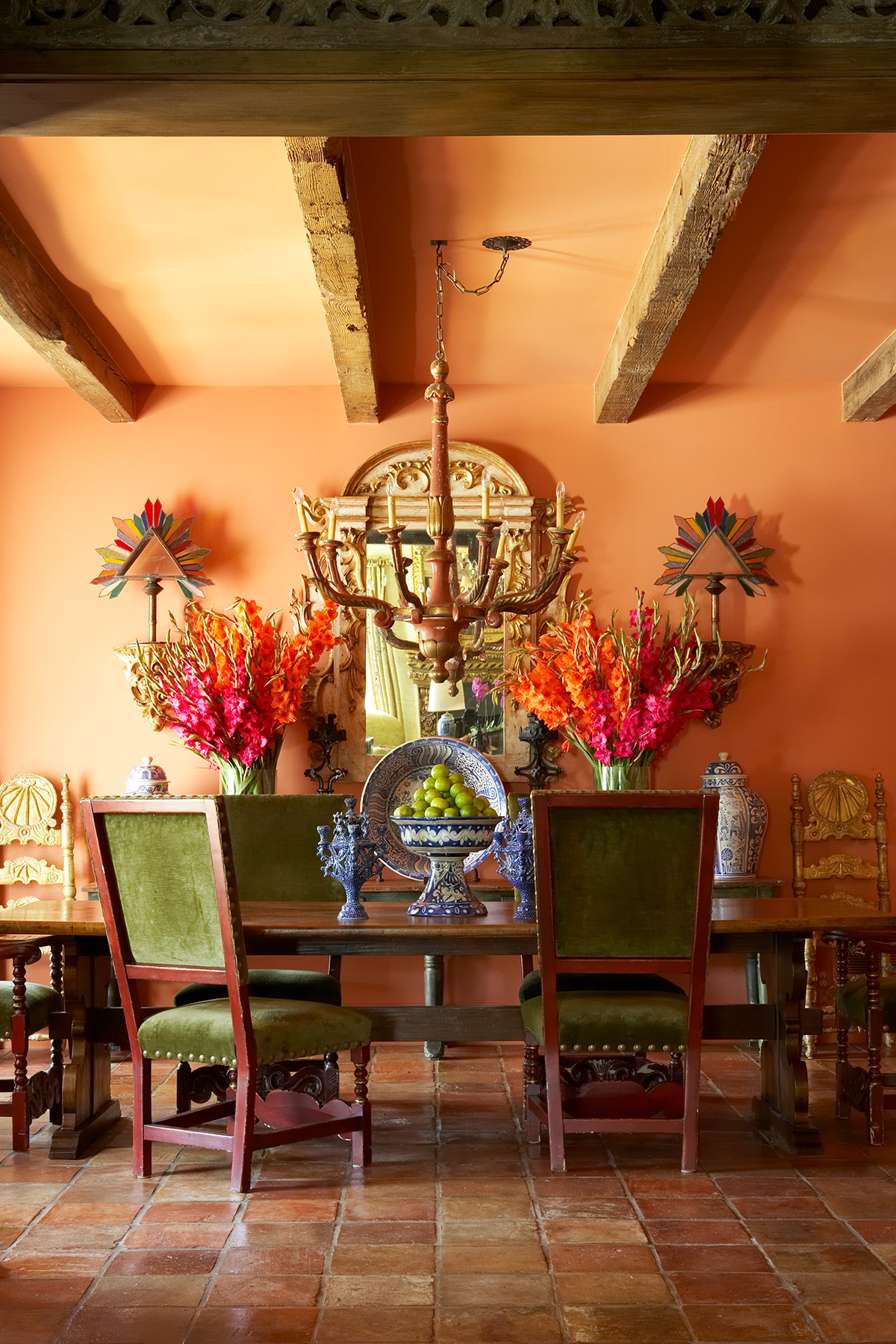
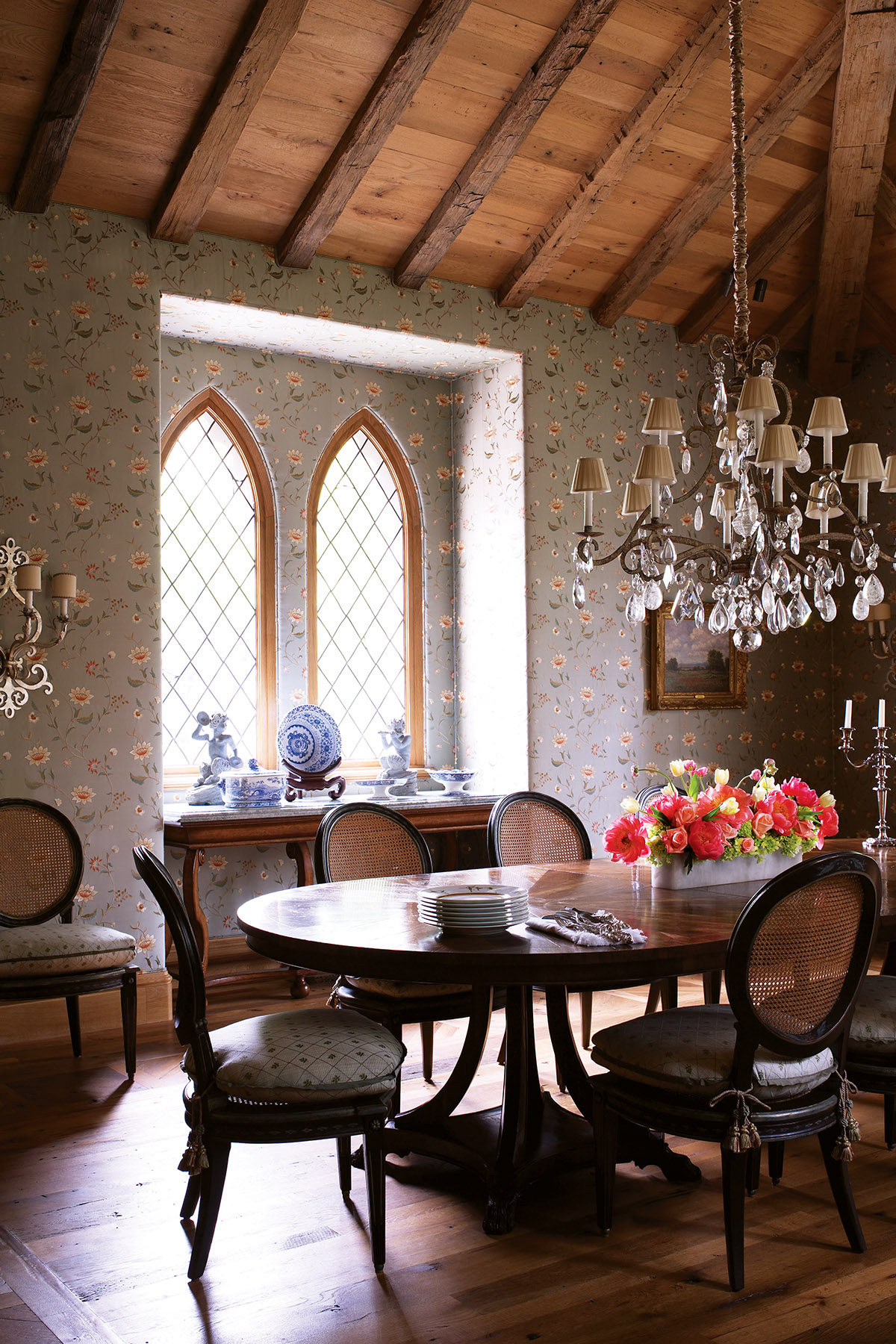
RIGHT Designer Lynn Sears wrapped this Preston Hollow dining space in embroidered silk.
Design that hearkens back to a bygone era creates a moodiness that works well in formal dining spaces. When used together, dark walls, ornate chandeliers, and antique furnishings make a room feel elevated. Who wouldn’t want to score a dinner invite to one of these fine dining rooms?
Forgo Formal for a Cozy Nook
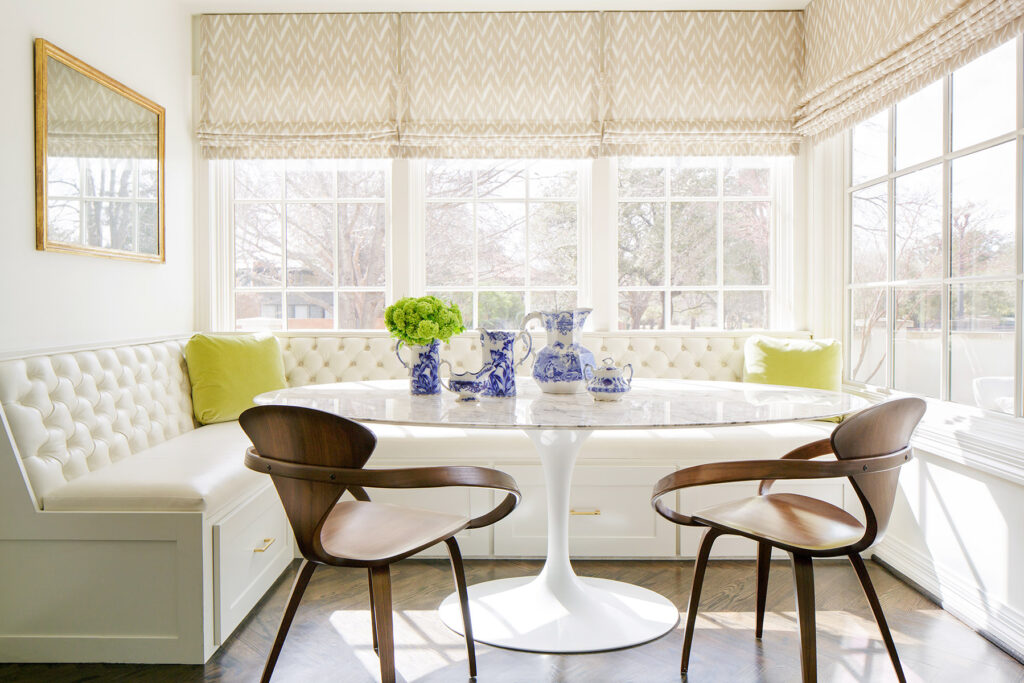
Why it works: The Joseph Noble vinyl on the custom banquette makes for easy cleanup in the casual yet elegant space. Sept/Oct 2014
Not every occasion calls for your finest crystal. Sometimes you just want a casual meal at home with your nearest and dearest. Enter the breakfast nook: an informal space where you can dine without pretense—or perfect table manners. We’re wild for banquettes, which are not only cozy but can accommodate extra bodies when needed. Whether you cover it in a wipeable vinyl like this Carrie Hatfield–designed kitchen or trim it in fringe, like this smoked-mirror-walled space by Neal Stewart, an upholstered bench beckons you to the table. In designers Bill Cates and Russ Peters’ personal home, a long custom bench is paired with a marble-topped table in their dual-purpose dining space. Don’t have the right space for a built-in? Consider a floating sofa, like this Sees Design space, which is unexpected but just as functional.
Good Things Come in Pairs
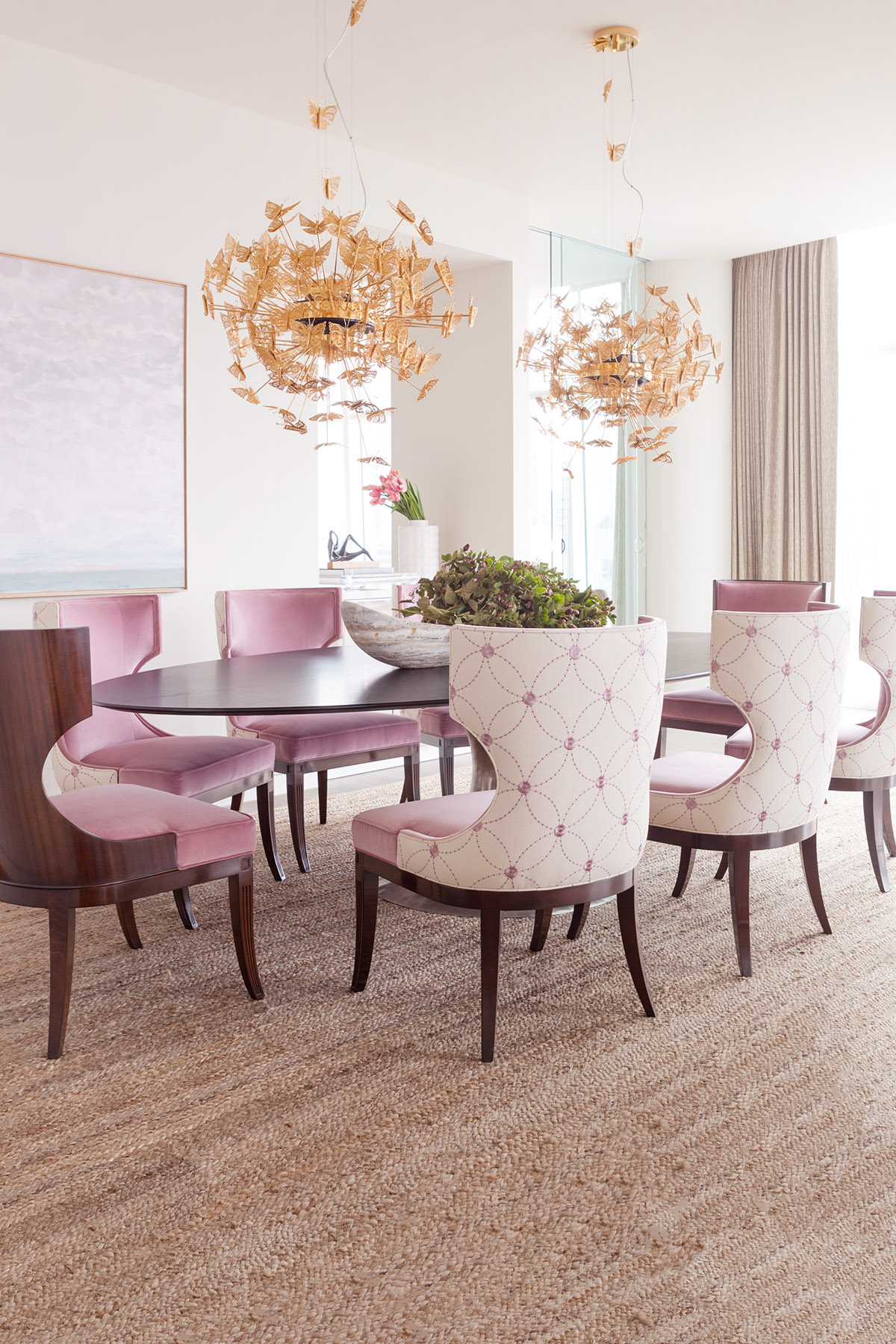
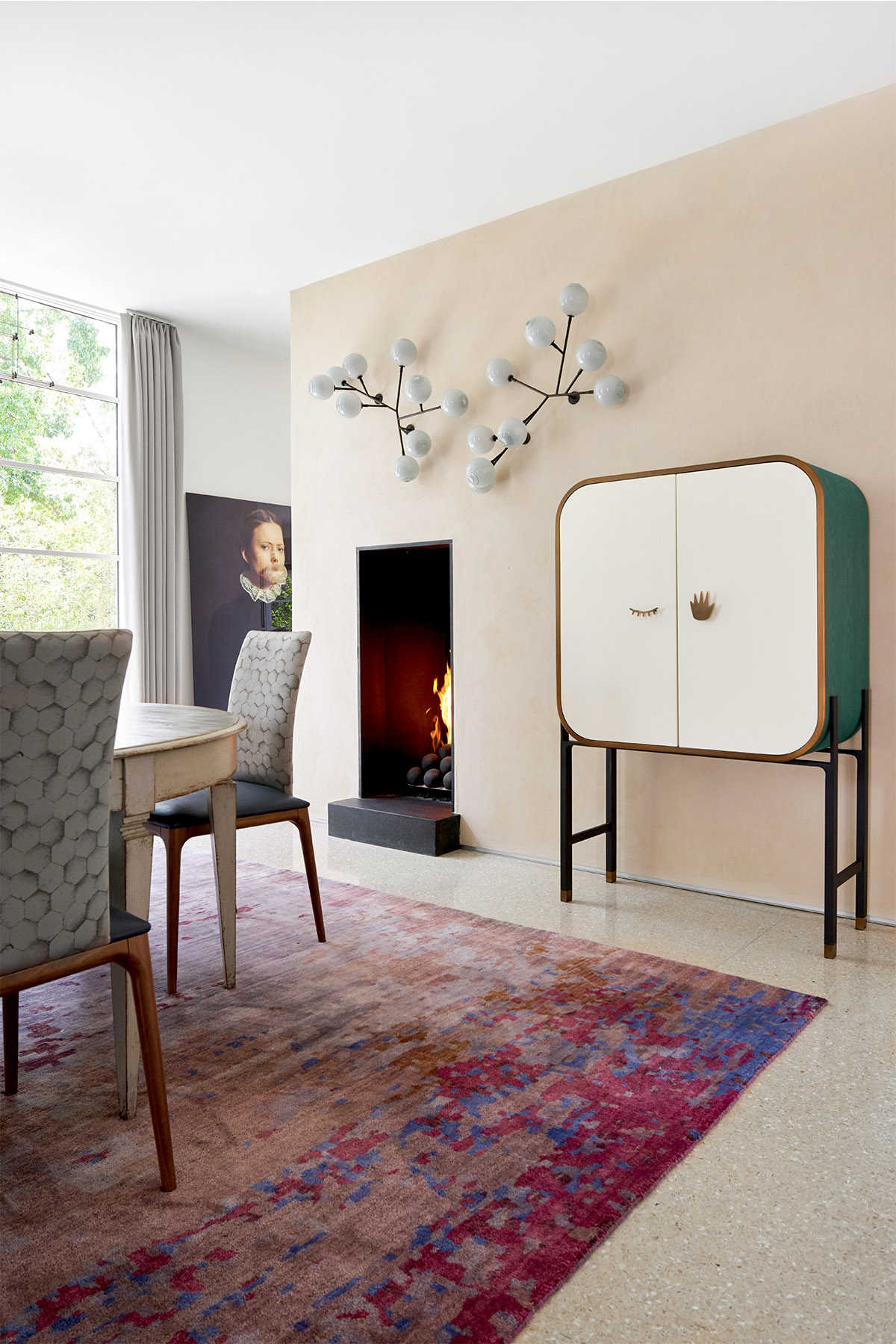
RIGHT Two SkLO blown-glass wall branches hang above the fireplace in this Highland Park home designed by Susan Bednar Long.
Two’s company when it comes to lighting, so don’t be afraid to double up. Whether it’s a set of matching chandeliers above a dining table, a pair of tall lamps flanking a mirror, or two playful sconces placed side by side, light fixtures are twice as nice when they’re perfectly paired.
Where to shop for lighting:
Holly Hunt
Jean de Merry
Lights Fantastic
Taylors
Wired Custom Lighting
Brendan Bass
Drapes for Every Space
If you want to get a designer talking, ask them their philosophy on drapes. There’s a wide range of options for fabric window coverings, and just as many opinions on favorite styles and appropriate hanging heights. Ever the diplomats, we appreciate them all equally in the right settings. These four dining areas provide perfect examples of using the right drape for the space.
Think Outside the Rectangle
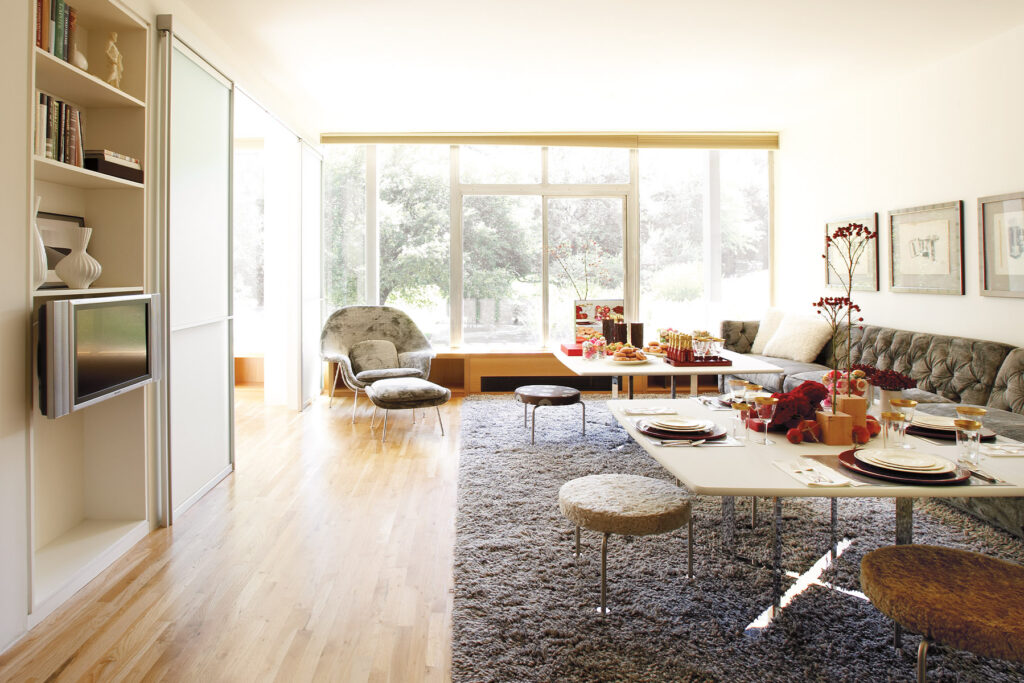
Why it works: The textures of the stools blend with the 20-foot wool shag rug to make the space feel cozy. Nov/Dec 2006
When choosing the central piece for a dining room, you can’t go wrong with a classic style and shape—but you don’t have to stick with the tried and true. You can let a desk do double duty as a table, for example, or even bring an outdoor piece inside.
Hidden Treasures
There are many ways to display your most beloved items, whether it’s your grandmother’s classic set you inherited or your own modern collection. We love when homeowners proudly display their prized assemblages in beautiful and unique ways. Plan ahead and consult your team of professionals on the best ways to display and protect your pieces, be it custom shelves, closets, or cabinets. Prefer to hide them away for safekeeping? Consider turning the doors into an art piece for double-duty décor.
Clockwise from top left:
- Carolyn Neher’s lush Turtle Creek apartment, designed by Neal Stewart, includes a silver closet stocked with starched linens, antique silver, Herend china, and a child’s Chippendale chair that once belonged to her son. Why it works: This tucked-away corner is designed just as intentionally as the rest of the abode. May/Jun 2009
- A custom mural by Anne Hines covers the doors of the storage area housing Charlotte Comer’s crystal collection, including antique glassware, gilt Steuben goblets, and more. Why it works: The elegant mural provides a conversation piece for guests and smart usability for the homeowner. May/Jun 2007
- John Phifer Marrs reads the paper in his kitchen, surrounded by transferware from the 1880s. Why it works: Proudly displayed on the wall, the collection becomes artwork. Oct 2007
- Designer Tracy Hardenburg constructed this custom china closet for a client who amassed a large collection from family. Why it works: The space includes black velvet shelving to make the collection pop. Jan/Feb 2019


